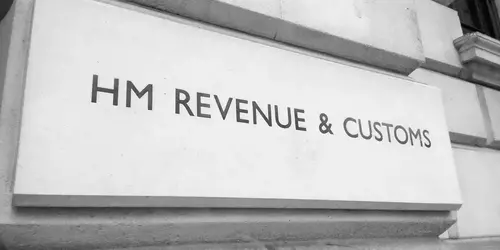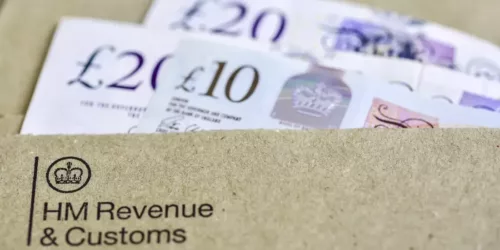PPI Tax: If You’ve Had a PPI Payout, You Can Reclaim Tax
- What is a PPI tax refund?
- Why the personal savings allowance matters
- Everything you need to know about a PPI tax refund
A PPI payout gives you a lump sum, which is always a welcome bonus in itself. However, these have always been subject to a deduction in tax, which has taken away some of the money from your entitlement. There is good news though, as the personal savings allowance, launched in April 2016, has entitled taxpayers to earn up to £1,000 interest tax-free, which means you can make a claim for a PPI tax refund.
The HMRC PPI tax refund entitles you to the tax that may have been deducted from your claim in the first place. This article will look into what a PPI tax refund is, why you can make a claim and how much you might be able to receive.

What's On This Page?
Click the links below and head straight to a specific section of the article.
What Is a PPI Tax Refund?
To date, over £38.3 billion has been paid out in PPI refunds. What’s better is that you can reclaim tax on PPI refunds as this is usually deducted from the payout. Tax is usually taken on the lump sum because it acts as savings interest that you would have made in lieu of not having the PPI in the first place, meaning you would have been taxed on the money you’d have had otherwise. Thanks to a development in 2016, it’s now possible to make a PPI tax refund.
To break it down, there are three parts of a PPI return:
The PPI itself
Any interest charged as an extra loan, which was taken out to pay for the PPI
Statutory interest of 8% a year of the total of the previous two parts
It’s the final part that is liable to tax, and this is shown on your PPI statement. If it isn’t shown, you can request this from the company that gave you your refund. This is also the part which you can claim a PPI tax refund on.
In April 2016, the personal savings allowance was launched, which allows most taxpayers to earn up to £1,000 a year in savings interest tax-free. For some reason, PPI payments still have 20% tax automatically deducted, even though most people don’t need to pay this. A PPI tax refund ensures that you get your entitlement back in line with your personal savings allowance.
For more information about PPI tax, take a look at our ultimate guide for tax on PPI refunds.
What Is the Personal Savings Allowance?
This is crucial to understanding your PPI tax refund amount. The personal savings allowance is essentially the amount of interest you can earn a year without paying tax on. This is across all your bank accounts, but doesn’t include ISAs. It is dependent on the amount of tax that you pay.
20% taxpayers can earn £1,000 interest a year tax-free
40% taxpayers can earn £500 interest a year tax-free
45% taxpayers cannot earn a personal savings allowance
How Much Can You Claim With a PPI Tax Refund?
Depending on your personal savings allowance, your PPI tax refund could be more or less. The tax that you can claim back will also depend on how big your claim was in the first place, from £1,000 to £15,000 or more. Bearing in mind, the tax on PPI refunds is only on the tax that was taken, rather than refund itself. To give a rough approximation, your claim can be anywhere between £40 and £1,500.
The amounts below are estimates from Martin Lewis’ blog and give an indication of how much you can expect to claim in 20% tax for your PPI tax refund.
PPI Reclaim | 3 Year Old Policy | 5 Year Old Policy | 10 Year Old Policy |
£1,000 | £40 | £60 | £100 |
£3,000 | £120 | £180 | £300 |
£7,500 | £300 | £460 | £730 |
£15,000 | £610 | £910 | £1,470 |
Is There a Deadline to Reclaim PPI Tax?
There’s not a deadline, as such, but there’s limits to how far back you can make a PPI tax refund. As long as you are owed PPI tax, you can make a claim for a PPI tax refund, but it can only be backdated to the last four years, as well as the current year. This means that claims going back even further than 2016 won’t give you the tax on any interest you would have received, despite the allowance kicking in that year.
If you didn’t pay any tax in the year that you had your PPI payout, you can claim all of the tax back in your PPI tax refund. This is, of course, unless your statutory interest pushes you over the taxpaying threshold, even if this is just by a penny. Any interest you received towards your personal savings allowance is added to the PPI tax refund amount. If this is more than £500 for a 40% taxpayer, or £1,000 for a basic rate taxpayer, you will only pay tax on the amount that exceeds this limit; the rest is yours.
Already Had a PPI Payout? You Can Still Claim
The good news is, even if you’ve had a PPI payout, chances are you were already taxed on the amount you received, so you should be able to get a PPI tax refund on top of the lump sum. Payouts are usually calculated with 20% tax in mind, so an additional claim can be made for a PPI tax refund simply because of the personal savings allowance and how it works for you.
If you took out a claim before 2016, you might not be able to claim, as the personal savings allowance didn’t exist before this. It’s only because of this allowance that a PPI tax refund is possible. It’s useful to check to make sure you are eligible before you make a claim.
Despite the deadline for PPI claims having already passed, there are still ways in which you can receive money back. The PPI tax refund is one of these ways. Plevin PPI claims are another, which focuses on the commission that was charged on the policy. For more information about Plevin PPI, read our accompanying guide on Plevin PPI explained.










